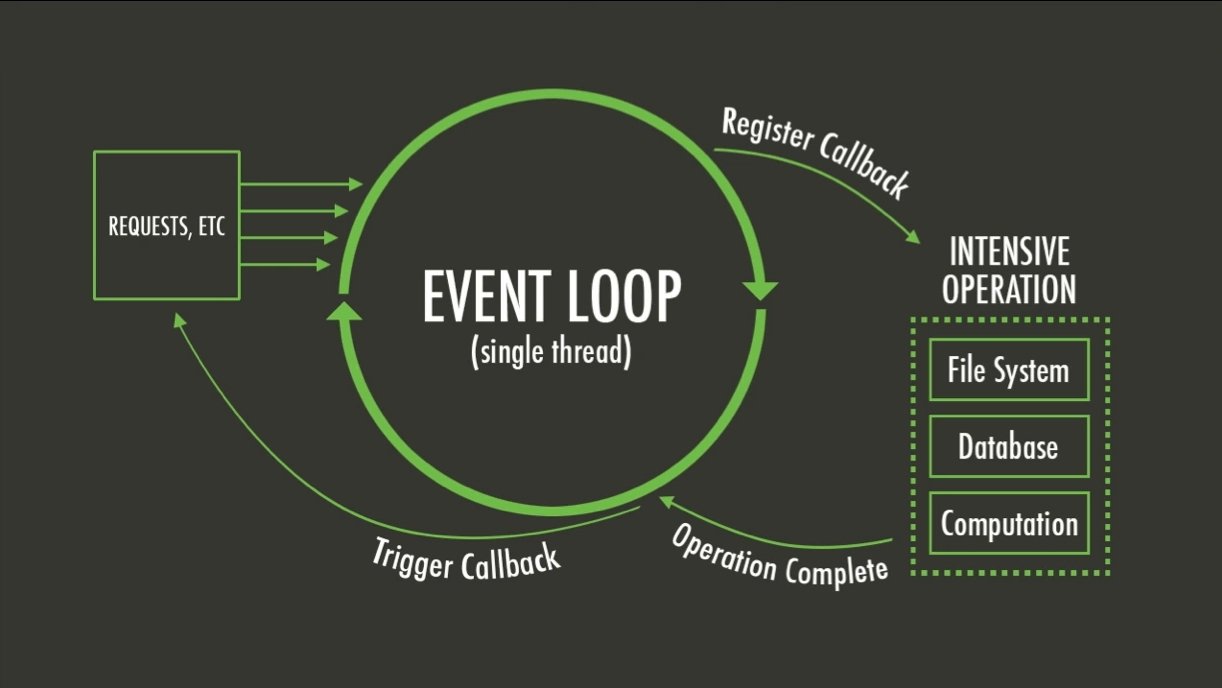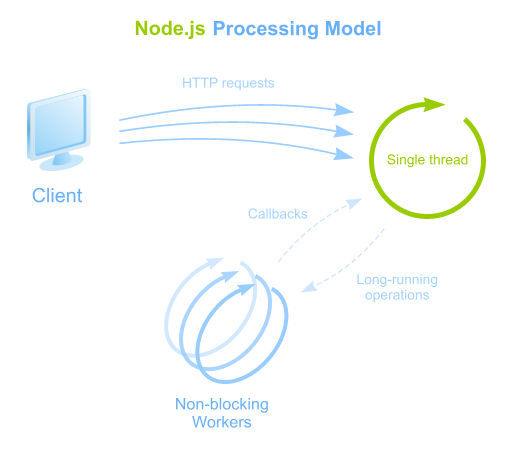
What is Node.js?
Node.js (or simply Node) – is a server platform for working with JavaScript through a V8 engine. JavaScript performs an action on the client side, and the Node – on the server. With Node can write full applications. Node can work with external libraries, call the command of JavaScript code and run the Web Server role.
What is the advantage Node?
C Node is easier to scale. If you connect to thousands of users Server Node operates asynchronously, that is, sets priorities and allocates resources more competently. Java is, for example, allocates for each connection a separate thread.
Location Node generally come from?
Node appeared in 2009 thanks to Ryan Dalu. Prior to that, the servers reigned approach “one thread per connection”, but Dahl came up to use the system, which focuses on events. That is reacting to an act or omission, and allocates a resource. The main purpose of Node – to build scalable network servers.
Some of the major companies using Node?
Of course, this is an incomplete list:

Source: strongloop.com
eBay is gradually moving to the Node, as well as a web version of PayPal. In LinkedIn more in 2012 moved to the Ruby On Rails on the Node and immediately felt the benefits of this platform: 27 servers showed a 20-fold increase in speed.
What can I write to Node?
A full program for the Web, Linux, OS X and Windows.
And if more?
No problem. Node is useful for creating API – there are already comfortable library like Loopback.
In this language, you can write cross-platform applications – in conjunction mobile + desktop Node helps to achieve synchronicity. For example, when you write a message with the phone, it immediately appears on the laptop and on the Web.
And something fashionable Node knows?
Of course. Node – is the home of all “Internet of things» (Internet of Things, IoT). Thermostats, fitness trackers – all this can be programmed via the Node.
Node accidentally losing popularity?
Quite the contrary. Here is a chart of interest to the Node since 2009 in Google search:

Interest in the Node is growing rapidly and already passes on this indicator, Ruby and Objective-C.
NodeJS, otherwise known as Node. JS development environment, is a runtime environment, based on the V8 interpreter, which converts JavaScript into a full-fledged general-purpose language. Event-driven programming methods are used in Node.JS web development. Node has its own API for interactions with input-output devices. That is mainly used for high-performance web servers and distributed web applications development, although Node.JS developers may also use it for desktop window applications.
Now after a brief terminological definition of Node by an experienced Node.JS developer, we’d like to provide some basic info on web development with node and express.
So let’s take a glance under the bonnet of Node.JS, see it main elements and sort out pros and cons.
JavaScript in Node. JS development

JavaScript is an easy-to-learn scenario programming language featuring automatic memory management. Development of JavaScript was focused on the similarity of the syntax with the Java language, the simplicity of working with it for people without specialized education and lowest possible entry threshold. To date, JavaScript is widely used as a basic scenario language for interactive web pages. JavaScript is an implementation of the ECMAScript scenario language (ECMA-262 standard).
Scripting or glue languages operate with ready software components describing scenarios of their interactions. Most of them (including JS) are interpreted.
| Programming Languages | ||
|---|---|---|
| Interpreted | Precompiled | Compiled (system languages) |
| Interpreter is fed a script, executing it block by block | Scenarios are precompiled into an intermediate – bytecode | Program code is compiled into a binary executable |
Being an interpreted language brings two major advantages to JS. First – due to step-by-step execution it allows some in-flight adjustments, second one is cross-platform nature of scenarios, they could be launched wherever there is an interpreter.
JavaScript also features automatic memory management that carries memory allocation and releasing for program objects based on their use. It strips this additional responsibility off the developers, which is quite useful for novice and amateur coders.
Gradation of learning is generally a great trait of JavaScript. One can study the basics and that would be enough for most use cases, while interested users can go deeper, up to serious professional levels.
JavaScript’s usability and ease of learning led to its widest spread, making it the standard scripting language for HTML. All modern browsers for major operating systems have built-in JavaScript interpreters.
However, JS also has some shortcomings:
- Lack of dependency control means and namespaces isolation;
- Lack of modularity and the components management system;
- Lack of standard general purpose functions libraries, file system interaction and input-output devices control functions;
- Software developed with the use of interpreted languages is considerably slower than with the use of traditional system languages.
Node.JS development was started specifically for leveling these disadvantages
Node. JS application
Ryan Dahl proposed Node development in 2009 as a means of creating effective scalable web-servers. Initially, platform ideology was focused on event-driven programming, as opposed to the traditional system of multi-threaded programming. The advantages of an event-oriented model are considerable simplicity and Node. JS performance. Node.JS has brought event-driven, highly scalable, callback operated goodness to web-servers, ditching their high concurrency problems, thus boosting up performance. And since JavaScript was so popular Node’s target audience – the enormous web-development community – immediately got their hands on a comprehensible and easy to use, yet powerful tool.

Dependencies, package management, etc.
First two named JS shortcomings are effectively dealt with Node’s Unified API, allowing combining Node with browsers and Document Databases, and the “npm” – default Node’s packet manager.
Libraries
Node’s audience is huge. Seriously huge. Immense community support brings tons of open-source libraries, some providing such supermodern functionality, we’re just looking forward to use. Industry is very favourable to Node.JS, there’s even a NodeConf held each Summer. Community has developed several frameworks assisting all the input-output issues and providing support for accelerating software development.
V8 in Node.JS development environment
V8 interpreter is an open source JavaScript (JS) engine developed by Google. Its task is the analysis of scripts written in JS and their execution. It differs favorably from competing engines by the speed, scalability, and efficient memory manager, which is why it was chosen as the basis for the Node. V8 usage is a great deal of overcoming speed issues of interpreted languages.
So as you see, Node.JS is a modern and powerful instrument, highly supported in industry and providing great possibilities for web-server development. Highly skilled team of Node.JS pros is very effective and able to show record breaking development terms.





